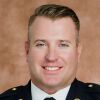Download your copy of the Fire Command Ready digital edition, featuring content about the difference between being in command and in control; command drills for every incident commander; and how to bring the scene back under control when things go sideways. Download the special report today.
Many of us hope to someday master the art and science of golf. If you count yourself among this group, then you know that to achieve skilled golfer status, you need to spend hours (and hours and hours) honing your abilities on the driving range. From there, you’ll need unwavering focus and self-discipline to execute a flawless shot on the course. Chances are you’ve experienced hitting a subpar shot and mentally urged yourself to “keep your head down” or “stay focused,” perhaps accompanied by some colorful language.
Leading the response to any fire incident, especially a major one, demands the same deliberate commitment, focus, determination, self-discipline and practice required to excel in golf. The problem: Incident command tends to take place in a far more chaotic environment than a golf course. Exercising self-discipline is paramount amidst chaotic situations. Your role is to restore composure and order amidst the turmoil. If you cannot regulate your own actions, how can you manage the incident effectively? Are you prepared for this responsibility?
Sets and reps
The mental fatigue associated with command should be acknowledged and managed. The stress of the incident, the stress of safety, and the adrenaline rush and dump that comes with the incident’s timeline all impact your ability to communicate and think clearly.
Preparation is one controllable and impactful way to bolster your performance. Obviously, the more prepared you are, the better you will perform. Focus on sets and reps. Just like hitting a golf ball, the more you do it, the better you will hit it. Command is the same; the more you practice through real-world simulations, the better you will perform when the tones drop.
There are many sources for command training. However, you can create your own scenarios using YouTube or fire software. Another excellent opportunity to increase sets and reps is driving the neighborhood to practice scene size-ups and tactical decision-making. The drive provides the opportunity to learn about the neighborhood, identify community hazards and risks, and discuss tactical operations.
Breathing basics
Calm down, breathe, collect your thoughts, and bring calm to the incident. Start with breathing, slow your heartbeat, and remember that it’s not your emergency; you adopted the emergency, so don’t make it worse. Control your voice. If you have to pause before communicating on the radio, do so. It’s better to take an extra half-second than to miscommunicate to your crew.
Tools of the trade
Be prepared with the command boards, tablets and equipment to do the job. Make sure you have the resources available to do the work. Use technology to provide plans and data to support the operation. Establish an operational system that you consistently use for every call and personalize it to work for you.
I recommend having a vehicle command, but if your system doesn’t allow it, be prepared for the climate and environment.
While you might not think of water and food as “tools” per se, they are critical to fueling your mind. Remember to hydrate. When dealing with emergencies, providing food, snacks and comfort becomes critical. Just like firefighters need rehabilitation, you also need to take care of yourself.
Tactical objectives and benchmarks
One of the greatest challenges for incident command officers is to deviate from their normal approach. There are many factors that impact tactical decision-making and necessitate a change of plans:
- Staffing
- Response time
- Incident time
- Occupancy
- Building construction
- Rescue
- Fire conditions
- Fuel Load
We tend to rely on familiar tactics, but we cannot get stuck in a “that’s how we always do it” mindset, as conditions can change at the drop of a hat, and our tactics must change too. Sometimes we use a smaller hose when we should use a larger one, or we enter through the wrong door instead of choosing the closest access point to the fire. We also sometimes apply tactics meant for houses to larger buildings. In the worst cases, we fail to analyze the impact of our tactics on the situation, which can make the situation worse.
When dealing with known or potential victims, it’s important to remember that we have two options: Remove the victim from the hazard or remove the hazard from the victim. This can be challenging if you have limited staff. This is where studying, knowing your capabilities, and understanding fire dynamics can impact not only your own safety but also the safety of the public.
Final thoughts
The key to effective command is preparation, sets and reps, personalizing your system, and recognizing that there is a right time and place for all fireground tactics. Choose wisely. Most of all, controlling your emotions and your mindset will make an impact on the incident outcome. Go to work, practice and prepare.







